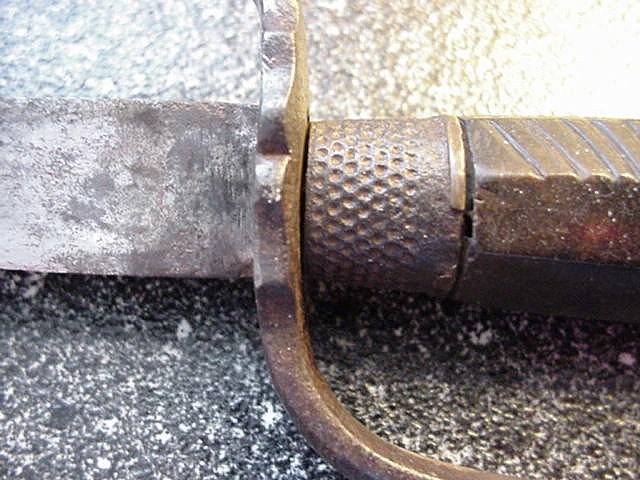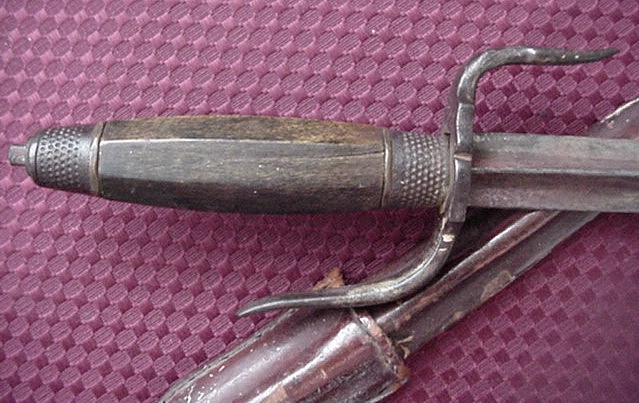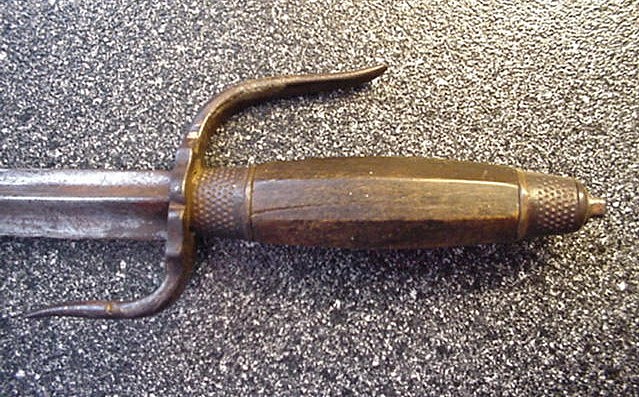Posts: 1,978 Location: Nipmuc USA
Sat 12 Dec, 2009 2:24 pm
My vote/speculation is a 20th century build of a French sword blade from the late 19th century onwards a bit.
The blade even dished a bit where the manufacturer marks/script were.
http://www.arms2armor.com/Swords/fren1887iof.htm
This blade form is not quite shaped as the 18th century blades. There is often an urge to place blades as early as possible, when a more recent type may be less apparent but fit to a T :) The Gras bayonet epee T spine the other way, back to edge instead of the sideways officer's epee linked above.
With trench art what is and was prevalent in several conflicts around the period of that particular French epee blade, my thought immediately went to that but I haven't popped in at Ethno lately and figured someone here would make the association early on.
Continental Europe and early to mid 20th century, my thoughts.
Cheers
GC.
Oh yes, here is my modern hafted poingard but I know my blade to be 18th century.









